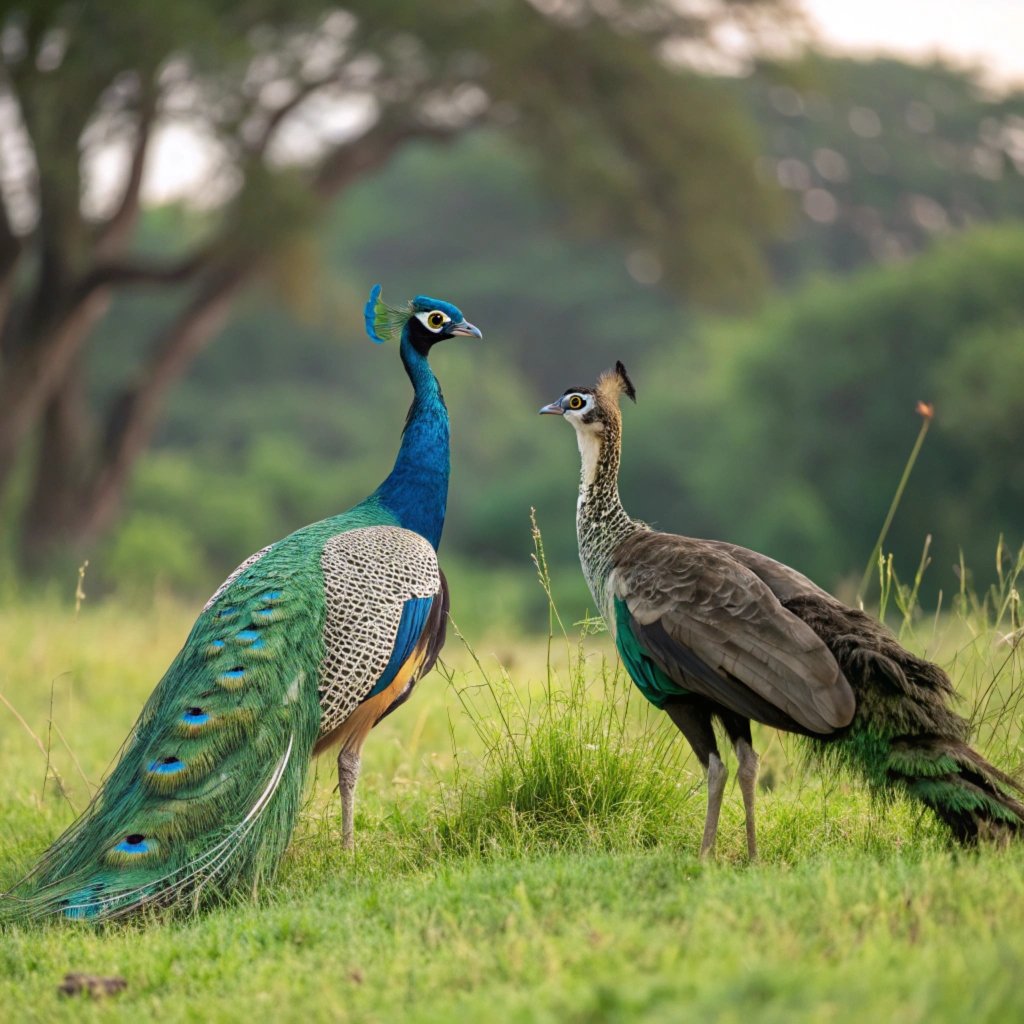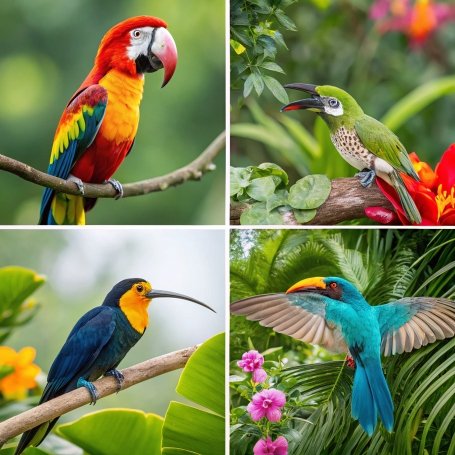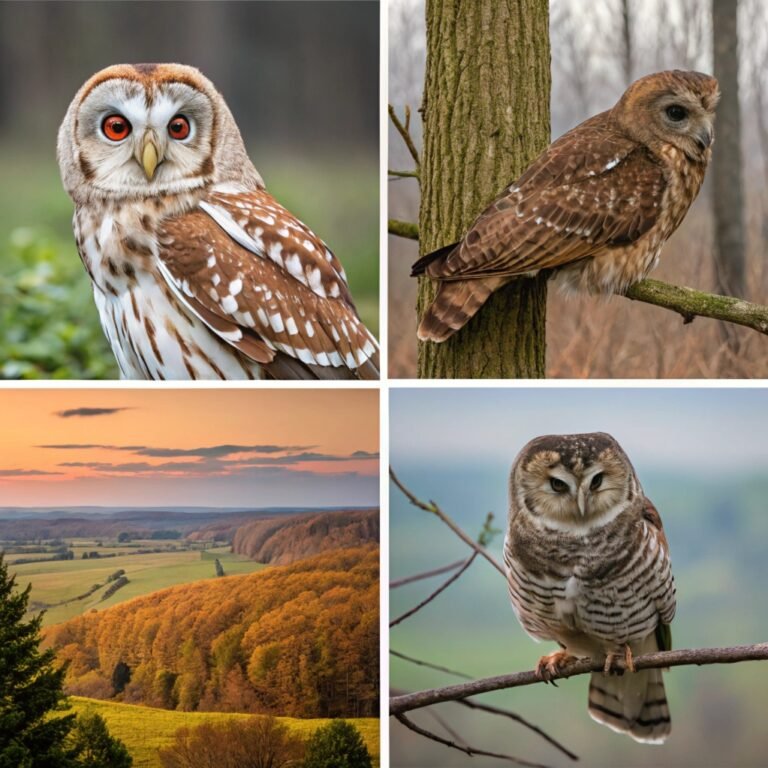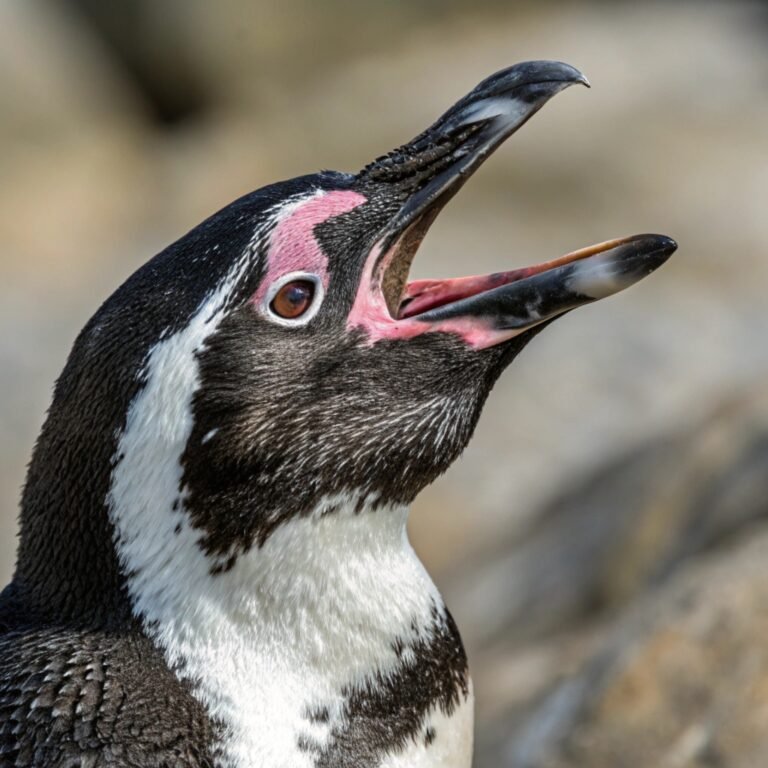Differences Between Male vs Female Peacocks – A Comprehensive Guide to Nature’s Most Dazzling Birds
Peacocks, with their resplendent plumage and regal bearing, have long captivated human imagination.
However, the term “peacock” actually refers specifically to the male of the species, while females are known as peahens.
Together, they form the peafowl family. The differences between male and female peacocks are striking and extend far beyond their appearance.
This comprehensive guide will delve into the fascinating world of peafowl, exploring the various aspects that set males and females apart.
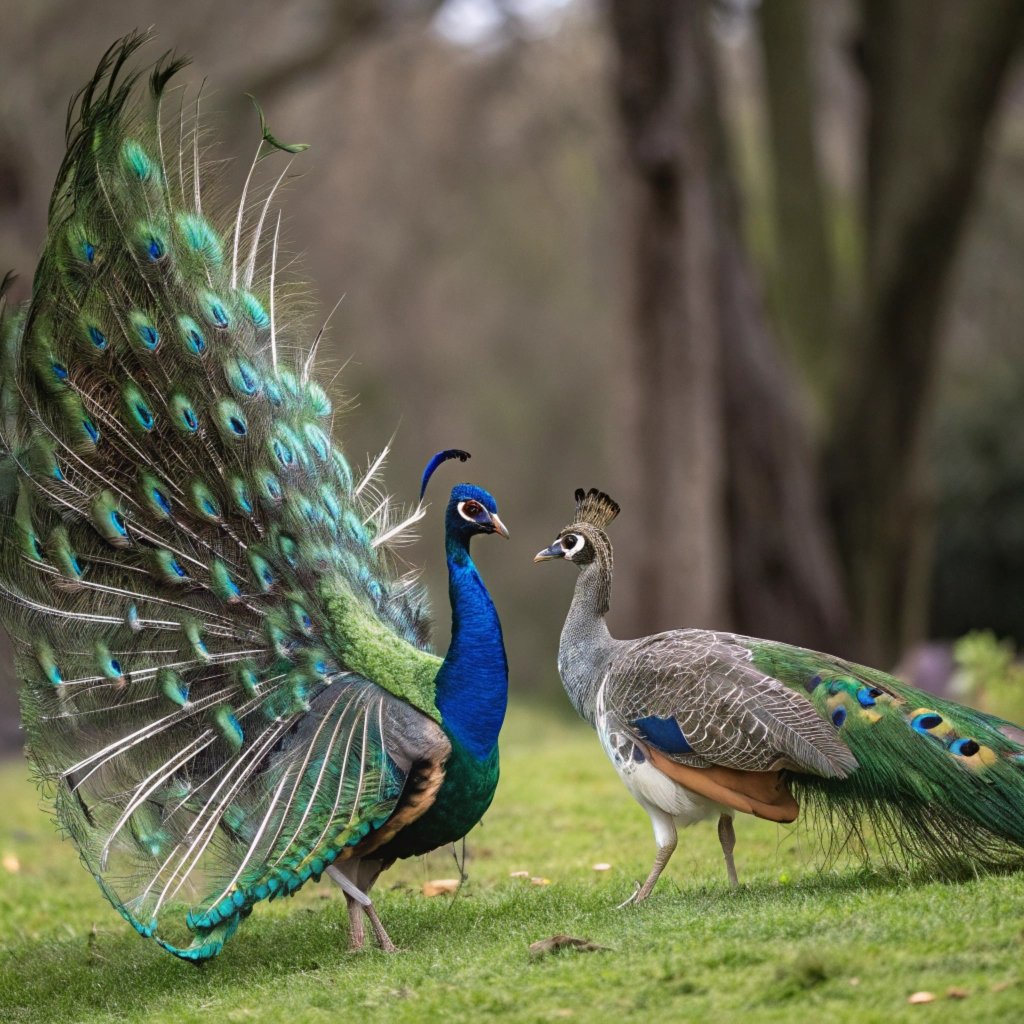
Key Takeaways:
- Male peacocks are known for their vibrant, iridescent plumage and long, elaborate tail feathers, while female peahens have more subdued, brownish-gray coloration.
- Males are generally larger than females, with a body length of up to 4.5 feet and a total length of up to 9 feet including their tail.
- Peahens are more petite, measuring around 3.5 feet in length and weighing between 6 to 9 pounds.
- Male peacocks engage in elaborate courtship displays, fanning out their tails and performing intricate dances to attract mates.
- Females are responsible for nest-building, incubation, and chick-rearing, with little to no involvement from males in parenting duties.
- Both genders share similar dietary preferences, but males may forage in more open areas during breeding season.
- Male peacocks are more vocal and territorial, especially during mating season, while females are generally quieter.
- The differences in appearance between males and females serve important evolutionary purposes, including mate selection and camouflage.
- Peafowl exhibit interesting social behaviors, with males often forming small groups and females tending to be more solitary or forming loose associations.
- Understanding these differences is crucial for conservation efforts and maintaining healthy peafowl populations in both wild and captive settings.
The Spectacular Plumage: A Tale of Two Genders
The most striking difference between male and female peacocks lies in their plumage. Male peacocks are renowned for their breathtaking display of colors and patterns.
Their bodies are covered in iridescent blue and green feathers that shimmer and change hues as light hits them from different angles.
The crown jewel of the male’s appearance is undoubtedly his train – the long, elaborate tail feathers that can reach up to 5 feet in length.
These feathers are adorned with vibrant eyespots in shades of gold, bronze, and blue, creating a mesmerizing pattern when fanned out.
In contrast, female peahens sport a more subdued palette of browns, grays, and muted greens.
This coloration serves a crucial purpose, allowing peahens to blend into their surroundings and protect themselves and their offspring from predators.
The peahen’s plumage, while less flashy, is no less beautiful, featuring intricate patterns and subtle iridescence that becomes apparent upon closer inspection.
Size Matters: Comparing the Stature of Peacocks and Peahens
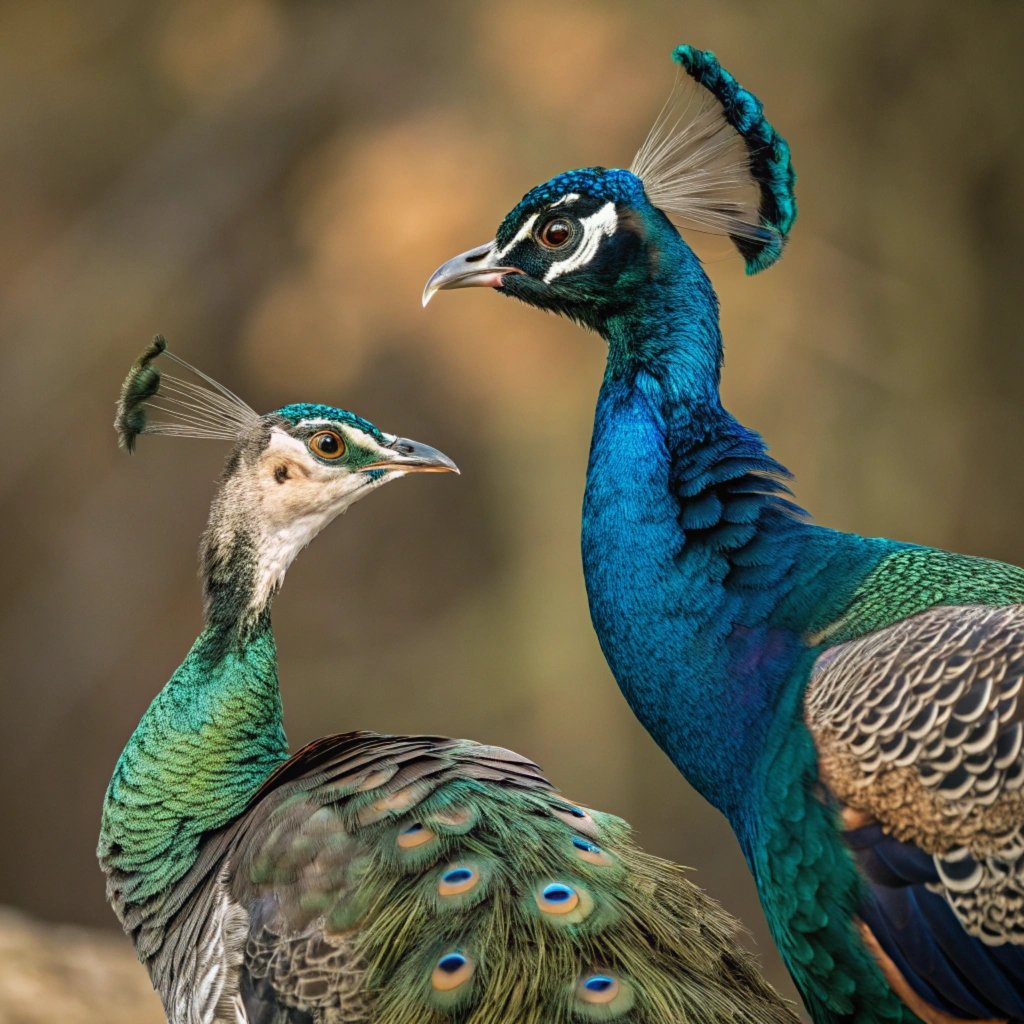
When it comes to size, male peacocks truly stand out. These majestic birds can reach a body length of up to 4.5 feet, with their impressive tail feathers adding an additional 5 feet, bringing their total length to a staggering 9 feet.
Male peacocks typically weigh between 8.8 to 13.2 pounds, making them substantially larger than their female counterparts. Peahens, on the other hand, are more petite and delicate in appearance.
They measure around 3.5 feet in length and weigh between 6 to 9 pounds. This size difference plays a crucial role in the mating dynamics of peafowl, as the larger, more visually impressive males are often preferred by females during courtship.
The shorter tail feathers of peahens, typically ranging from 3 to 6 inches in length, allow for greater mobility and agility, which is essential for their role in nesting and protecting their young.
This significant size dimorphism between males and females is a classic example of sexual selection at work in nature.
Courtship Rituals: The Dance of Love and Selection
The courtship rituals of peafowl are among the most spectacular in the animal kingdom, with male and female peacocks playing vastly different roles.
Male peacocks engage in elaborate displays to attract potential mates, utilizing their magnificent plumage to full effect.
During the breeding season, males fan out their long tail feathers, creating a stunning peacock train that can span up to 7 feet in diameter.
They then perform an intricate dance, shaking and vibrating their feathers to produce a mesmerizing visual and auditory display.
This performance is often accompanied by loud, far-reaching calls that serve to both attract females and assert dominance over rival males. Peahens, in contrast, take on a more passive role during courtship.
They carefully observe the displays of multiple males, assessing the quality and size of each peacock’s plumage.
The female’s choice is crucial, as it directly impacts the genetic quality of her offspring. This selective process has driven the evolution of the male’s extravagant features over millions of years.
Parenting Roles: From Nest-Building to Chick-Rearing
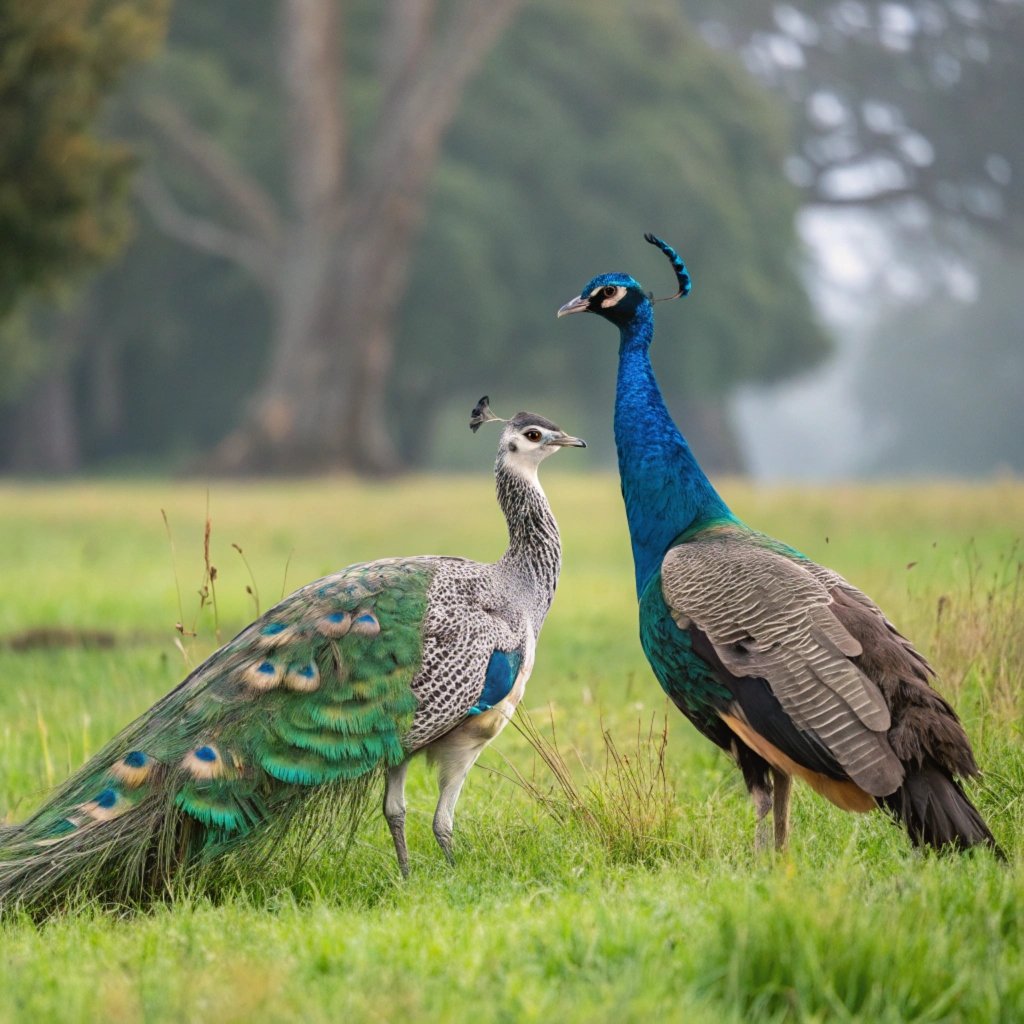
When it comes to parenting, the roles of male and female peacocks are starkly different. Peahens take on the primary responsibility for nest-building, incubation, and chick-rearing, with little to no involvement from the males.
After mating, the female selects a well-hidden spot on the ground to build her nest, typically in dense vegetation or under bushes. She lays a clutch of 3 to 8 eggs and incubates them for approximately 28 to 30 days.
During this period, the peahen rarely leaves the nest, making her vulnerable to predators and potential weight loss.
Once the peachicks hatch, the mother becomes fiercely protective, guiding her young and teaching them to forage.
She uses specific vocalizations to communicate with her chicks, alerting them to potential dangers or food sources.
Male peacocks, having fulfilled their role in mating, do not participate in these parental duties.
This division of labor allows males to focus on maintaining their elaborate plumage and competing for mates, while females ensure the survival and proper development of the next generation.
Dietary Habits: Foraging Techniques and Nutritional Needs
Both male and female peacocks share similar dietary preferences, but their foraging behaviors can differ slightly.
Peafowl are omnivorous birds, with a diet consisting of insects, small mammals, reptiles, and various plant materials such as seeds and fruits. Their strong beaks and feet are well-adapted for scratching the ground to uncover food.
During the breeding season, male peacocks may venture into more open areas to forage, as they need to maintain their impressive plumage and energy levels for elaborate courtship displays.
Peahens, especially when nesting or caring for young, tend to forage in more sheltered areas to minimize exposure to predators.
The nutritional needs of males and females can also vary, with males requiring additional nutrients to support the growth and maintenance of their extravagant feathers.
Both genders play a role in seed dispersal and insect control within their ecosystems, making them important contributors to their habitats’ biodiversity.
Vocalization and Communication: The Language of Peafowl
The vocal repertoire of male and female peacocks differs significantly, reflecting their distinct roles in peafowl society. Male peacocks are generally more vocal and boisterous, especially during the mating season.
Their calls can be loud and far-reaching, serving dual purposes of attracting females and deterring rival males.
The most recognizable peacock call is a piercing, trumpet-like sound often described as a “kee-aw” or “may-awe.”
Males also produce a variety of other vocalizations, including honks, barks, and hisses, each with its own specific meaning in peafowl communication. Peahens, in contrast, are generally quieter and more reserved in their vocalizations.
They communicate with their chicks through soft clucks and purrs, which help maintain cohesion within the family group and alert young to potential threats or food sources.
When alarmed, peahens can produce a sharp, staccato “kuk-kuk” call to warn others of danger.
These differences in vocalization patterns reflect the distinct social roles and behavioral adaptations of male and female peacocks.
Territorial Behavior: Defending Space and Resources
Territorial behavior is another area where male and female peacocks exhibit notable differences. Male peacocks are highly territorial, especially during the breeding season.
They aggressively defend their chosen areas from other males, using a combination of visual displays, vocalizations, and physical confrontations if necessary. A male’s territory serves as both a mating ground and a resource-rich area for foraging.
The size and quality of a male’s territory can significantly influence his success in attracting mates.
Peacocks will often perform their elaborate tail displays not just for females, but also as a way to intimidate rival males and assert dominance over their territory.
Peahens, while less overtly territorial, do exhibit some territorial behaviors, particularly when nesting or caring for young.
A nesting peahen will fiercely defend the area immediately surrounding her nest, attacking any perceived threats that come too close.
Outside of the breeding season, peahens may form loose associations with other females, sharing foraging grounds and roosting areas.
Lifespan and Aging: The Journey from Chick to Adult
The lifespan and aging process of male and female peacocks share some similarities but also have distinct differences.
In the wild, both genders typically live for about 15 to 20 years, although this can vary depending on environmental factors and predation risks.
In captivity, with proper care and protection from predators, peafowl can live significantly longer, with some individuals reaching 25 years or more.
Male peacocks generally take longer to reach sexual maturity compared to females. It takes about 3 years for a male to develop his full, adult plumage and be capable of successful mating.
Peahens, on the other hand, can reach sexual maturity as early as 2 years of age. As peacocks age, males may experience a gradual decline in the vibrancy of their plumage and the length of their tail feathers.
Older peahens might show reduced fertility and egg production. Both genders can experience age-related issues such as arthritis and decreased mobility in their later years.
Social Behavior: Interactions Within Peafowl Communities
The social dynamics of peafowl communities reveal interesting differences between males and females. Male peacocks often form small groups called “parties” or “musters,” especially outside the breeding season.
These groups can consist of 3 to 5 adult males and serve multiple purposes, including increased vigilance against predators and mutual preening.
During the breeding season, however, males become more solitary and competitive as they establish and defend their territories.
Peahens, in contrast, tend to be more solitary in nature or form loose associations with other females and their offspring.
These female groups, sometimes referred to as “parties” or “ostentations,” provide increased safety through collective vigilance. Peahens with chicks may temporarily join these groups for added protection.
The social structure of peafowl is fluid, with individuals moving between different groups throughout the year based on factors such as breeding status, resource availability, and predation risks.
Adaptations for Survival: Camouflage vs. Display
The stark differences in appearance between male and female peacocks are not merely aesthetic but serve crucial survival functions.
The peahen’s muted browns and grays provide excellent camouflage, allowing her to blend seamlessly into her surroundings.
This adaptation is particularly important during nesting and when caring for young, as it helps protect both the mother and her vulnerable offspring from predators.
The peahen’s ability to remain hidden is a key factor in ensuring the survival of the next generation. In contrast, the male’s vibrant plumage and long tail feathers, while making him more conspicuous to predators, serve a vital role in sexual selection.
The extravagant display of the male peacock is a testament to his genetic quality and overall fitness.
By surviving and thriving despite the potential handicap of such conspicuous features, the male demonstrates his superior genes to potential mates.
This balance between camouflage and display illustrates the complex interplay of natural and sexual selection in shaping the evolution of peafowl.
Habitat Preferences: Adapting to Different Environments
While male and female peacocks generally inhabit the same ecosystems, their specific habitat preferences can differ based on their distinct needs and behaviors.
Both genders are adaptable and can thrive in a variety of environments, including forests, grasslands, and even semi-arid regions.
However, male peacocks often prefer more open areas with scattered trees or elevated perches from which they can perform their elaborate displays and keep watch for potential mates or rivals.
These open spaces also allow their calls to travel further, increasing their chances of attracting females. Peahens, particularly during nesting season, tend to favor areas with denser vegetation that provide better cover and protection.
They seek out secluded spots with thick undergrowth for nest-building, which helps conceal their eggs and chicks from predators.
Outside of breeding season, both males and females may be found in more varied habitats, often gravitating towards areas with abundant food sources and access to water.
Conservation Implications: Protecting Peafowl Diversity
Understanding the differences between male and female peacocks is crucial for effective conservation strategies. The striking sexual dimorphism in peafowl has implications for population surveys and management.
For example, the more conspicuous nature of male peacocks can lead to overestimation of population sizes if not properly accounted for in census methods.
Conservation efforts must consider the specific needs of both genders, such as providing suitable display areas for males and adequate nesting sites for females.
The genetic diversity within peafowl populations is maintained through the female’s selective mating process, highlighting the importance of preserving natural habitats that allow for these complex mating behaviors.
Additionally, the different roles of males and females in peafowl society contribute to the overall health of ecosystems through seed dispersal and insect control.
As human activities continue to encroach on peafowl habitats, conservation initiatives must take into account these gender-specific behaviors and needs to ensure the long-term survival of these magnificent birds.
FAQs
What is the correct term for a female peacock?
The correct term for a female peacock is a peahen. The term “peacock” specifically refers to the male of the species, while “peafowl” is used to describe both males and females collectively.
Can female peacocks fan their tails like males?
While female peacocks (peahens) do have tail feathers, they are much shorter and less elaborate than those of males. Peahens cannot fan their tails in the same spectacular manner as male peacocks. Their tail feathers are typically brown or grayish and lack the vibrant eyespots characteristic of male tail feathers.
Do male peacocks help in raising the chicks?
Generally, male peacocks do not participate in raising the chicks. After mating, the female is solely responsible for nest-building, incubation, and caring for the young. Male peacocks play little to no role in parenting duties.
How can you tell the difference between a male and female peacock chick?
Distinguishing between male and female peacock chicks can be challenging, as they look very similar when young. As they grow, male chicks will start to develop more vibrant coloration and longer tail feathers. However, it may take up to three years for a male to develop his full adult plumage.
Are there any species of peafowl where the female is more colorful than the male?
In all known species of peafowl, the male is more colorful and ornate than the female. This is a classic example of sexual dimorphism driven by sexual selection. There are no known peafowl species where the female is more colorful than the male.

Hello, I’m Emily Price, the founder of Birds Affection. As a passionate bird enthusiast and spiritual seeker, I’ve always been fascinated by the symbolic meanings and mystical connections between birds and our lives. On this website, I share my knowledge and insights on the spiritual significance of various bird species, exploring their roles as messengers, guides, and teachers. Through my writing, I aim to inspire and educate others on the profound wisdom and beauty that birds bring to our world. Join me on this journey as we delve into the enchanting realm of bird symbolism and discover the hidden meanings behind these magnificent creatures.

